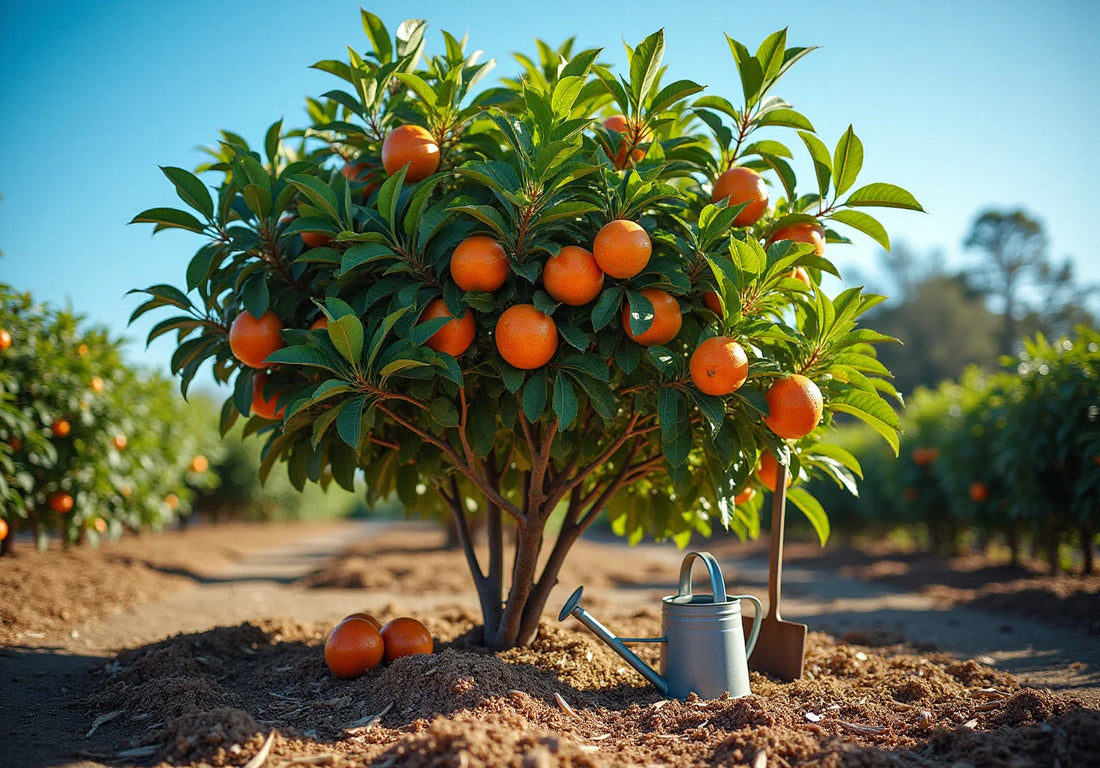
4 Steps to Successfully Grow Your Ruby Red Grapefruit Tree
Share
Growing a Ruby Red Grapefruit tree can be a rewarding endeavor, offering vibrant fruit and a touch of tropical beauty to any garden. Understanding the specific requirements—optimal sunlight, soil conditions, proper watering, and pest management—can significantly enhance the success of this cultivation.
However, challenges such as nutrient deficiencies or pest infestations may arise. This guide explores essential steps and troubleshooting tips to ensure that Ruby Red Grapefruit trees thrive, providing a fruitful harvest for years to come.
🍊Thinking about growing Ruby Red Grapefruit Tree in your garden?
Explore Ruby Red Grapefruit Tree at Everglades Farm - shipped directly from Florida.
1. Understand the Growing Conditions for Ruby Red Grapefruit Trees
Ruby Red Grapefruit plants thrive in warm, subtropical to tropical climates, requiring specific conditions for optimal growth. Understanding these key factors is essential for successful cultivation:
- Sunlight: Your plant needs a minimum of 6 to 8 hours of direct sunlight each day. Full sun is crucial for robust growth and abundant fruit production. Research shows that grapefruit plants flourish best when placed less than one foot from a south-facing window, maximizing their exposure to sunlight.
- Soil: Opt for a well-draining sandy loam mix with a slightly acidic pH, ideally between 6.0 and 7.5. Enriching the soil with organic material not only enhances drainage but also boosts nutrient availability, which is vital for strong plant growth. As plant expert Bethany Lakatos states, "Because they are sensitive to root rot, the key to success with grapefruits is getting them in well-draining soil."
- Temperature: Ruby Red Grapefruit plants prefer temperatures between 70°F and 85°F. While they can endure brief cold spells, protecting them from frost is essential, especially during early growth stages. These plants are cold-hardy down to 28°F, making them suitable for USDA Hardiness Zones 9a-11b. Additionally, grapefruit plants can reach heights of 20 to 25 feet, so ensure they are situated at least 12 feet away from homes, structures, or pathways.
- Watering: Ruby Red Grapefruit plants require 0.8 cups of water every 9 days when not in direct sunlight. Regular watering is crucial, particularly during the first year, to establish a robust root system.
- Humidity: Moderate moisture levels are ideal for these plants. In drier climates, consider misting the leaves or using a humidity tray to maintain moisture around the plant, which can help prevent stress and promote healthy growth.
- Fertilization: During the growing season, apply fertilizers suitable for citrus plants to sustain their health and encourage fruit production.
- Pruning: Trim your plant in early spring by removing dead or damaged branches to foster growth and enhance air circulation.
- Mulching: Apply a 2- to 3-inch layer of organic mulch around the root zone to conserve water and deter weeds.
By fulfilling these requirements, you will create an optimal environment for your ruby red grapefruit tree, ensuring it flourishes and produces delicious fruit. With proper care, these plants can live for over 50 years, making them a long-term investment for your garden.
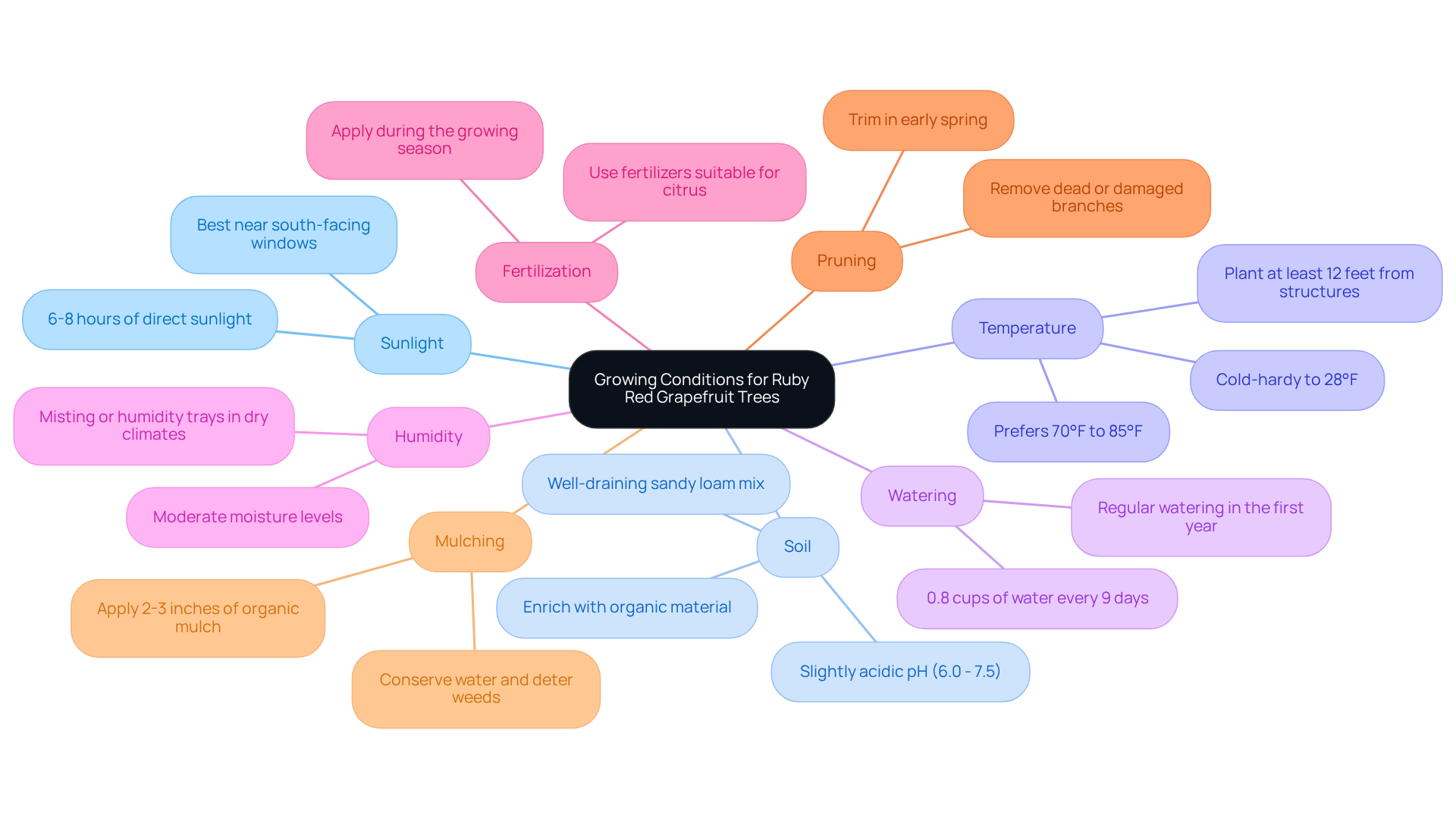
2. Plant the Ruby Red Grapefruit Tree Properly
To successfully plant your Ruby Red Grapefruit tree, follow these essential steps:
- Choose the Right Time: The ideal planting period is in spring after the last frost or in fall. This timing enables the plant to establish its roots before encountering extreme temperatures.
- Prepare the Planting Hole: Dig a hole that is twice as wide and deep as the root ball. This ensures ample space for root expansion, promoting healthy growth.
- Soil Preparation: Citrus trees thrive in sandy loam but can endure any well-draining substrate. Improve the dug-up earth by combining it with compost or well-decomposed manure. This enhances the ground, offering a nutrient-rich environment for the roots.
- Sunlight Requirements: Ensure that the planting location receives at least five hours of full, direct sunlight per day to maximize fruit production.
- Positioning the Sapling: Place the sapling in the center of the hole, ensuring the top of the root ball rests slightly above ground level. Fill in around the roots with the prepared blend, gently compacting it to eliminate air pockets.
- Irrigation: After planting, irrigate the plant thoroughly to assist in settling the ground around the roots. For the initial year, water the plant thoroughly two to four times each week, particularly during warm summer months, to maintain the soil moist but not saturated.
- Pruning: In early spring, trim the plant by removing any dead or damaged branches to promote growth and health.
- Preventing Overhead Irrigation: To sustain plant health, refrain from overhead irrigation, which can disseminate spores to healthy tissue.
By following these steps, you will prepare your ruby red grapefruit tree for success, ensuring it flourishes in your garden.
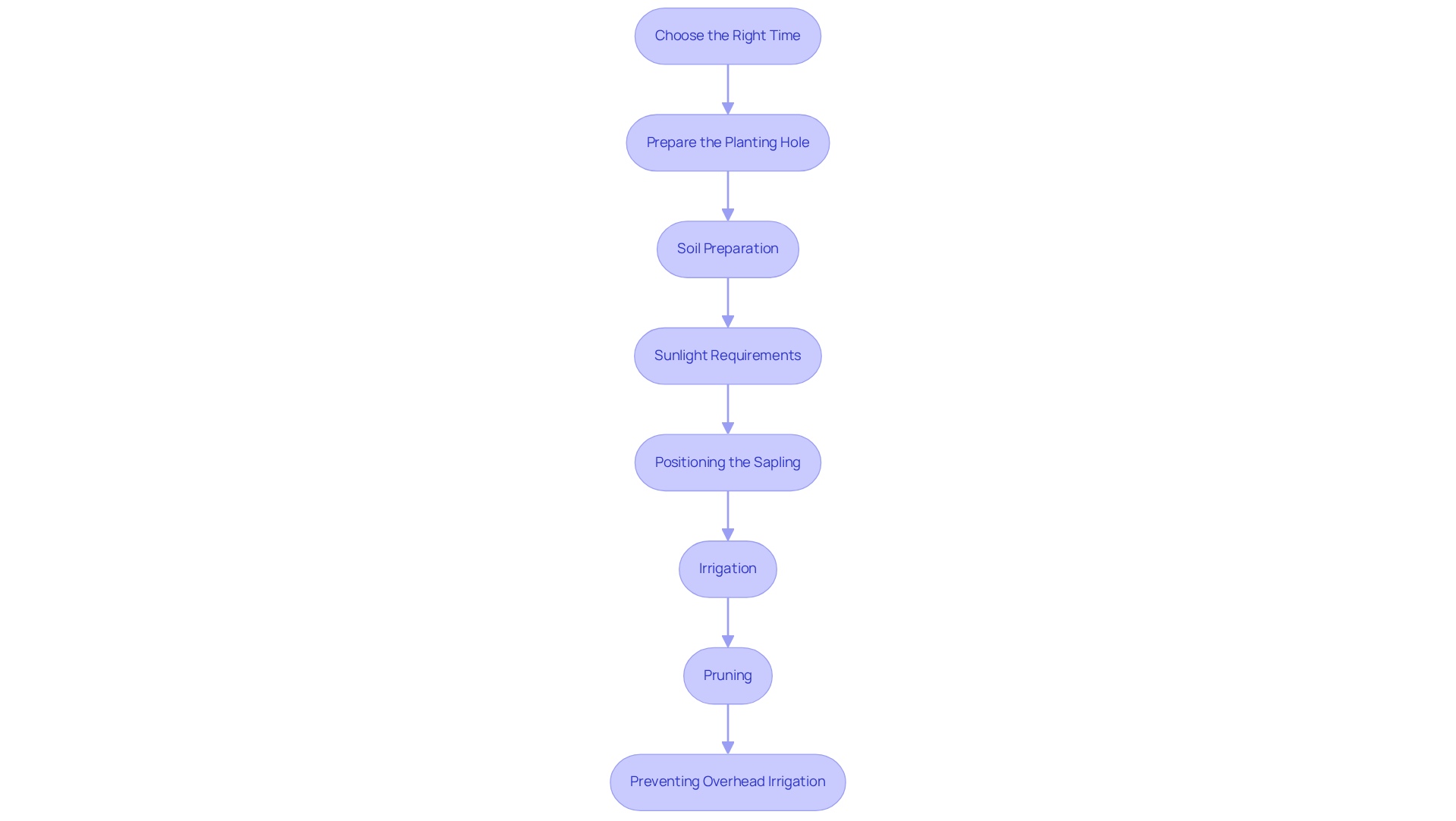
3. Maintain and Care for Your Ruby Red Grapefruit Tree
To maintain and care for your Ruby Red Grapefruit tree, adhere to the following guidelines:
-
Watering: Water your plant deeply once a week, allowing the top inch of soil to dry out between waterings. For potted plants, provide approximately 0.5 cups of water every 9 days. During dry spells, increase the frequency to prevent stress on the plant. This practice ensures that your tree receives adequate moisture, which is crucial for its overall health and vitality.
-
Fertilization: In early spring and late summer, apply a balanced, slow-release nutrient specifically designed for citrus plants, such as a nitrogen-rich formula (10-5-10). This ensures your plant receives the essential nutrients necessary for robust growth and fruitful production. The recommended annual nitrogen rate is between 120 to 160 lb/acre, promoting optimal development and yield.
-
Pruning: Conduct annual pruning to eliminate any dead or crossing branches. This practice encourages healthy growth and enhances air circulation within the canopy, which is vital for preventing disease. However, be cautious not to over-prune, as excessive pruning can reduce harvest and negatively impact the tree's productivity.
-
Mulching: Apply a layer of organic mulch around the base of the plant. This helps retain moisture, suppress weeds, and regulate soil temperature, creating an optimal environment for growth. Mulching not only benefits the tree but also contributes to the overall health of the garden ecosystem.
-
Pest Management: Regularly check your plant for pests such as aphids and scale. If infestations occur, utilize insecticidal soap or neem oil to effectively manage the situation. Additionally, monitor for any signs of disease to ensure the well-being of your plant. Proactive pest management is essential for maintaining the health and productivity of your ruby red grapefruit tree.
By adhering to these care practices, you will promote a healthy and productive Red Grapefruit plant, ensuring a plentiful harvest.
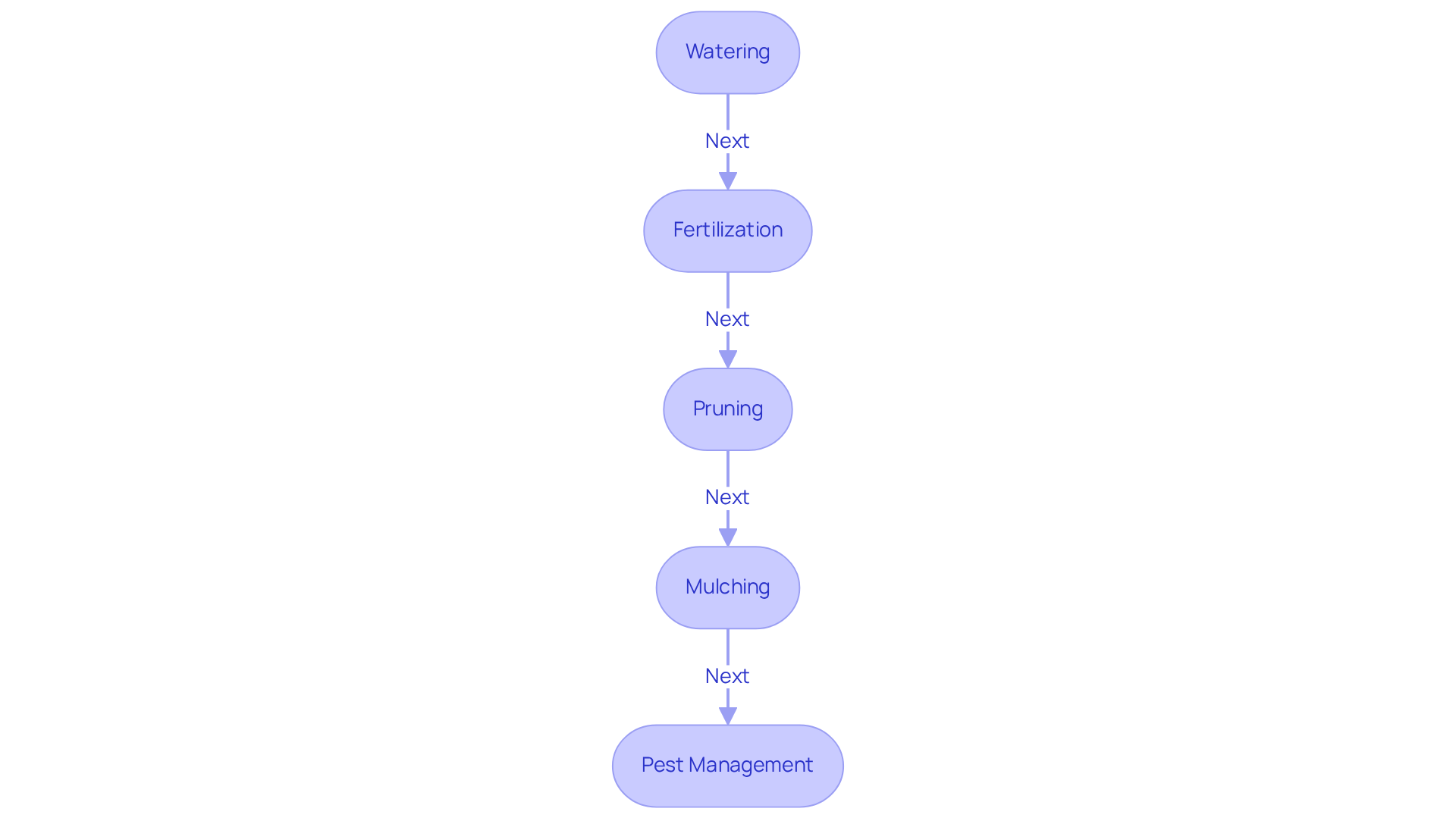
4. Troubleshoot Common Issues in Growing Ruby Red Grapefruit Trees
Here are some common issues you may encounter while growing Ruby Red Grapefruit trees, along with troubleshooting tips:
-
Yellowing Leaves: This can indicate nutrient deficiencies or overwatering. Check the soil moisture and consider applying a balanced fertilizer if the soil is too dry. Additionally, using Epsom salt by mixing one tablespoon in a gallon of water can help address magnesium deficiencies, which may also contribute to yellowing leaves.
-
Poor Fruit Production: If your plant is not yielding fruit, ensure it is receiving sufficient sunlight (6-8 hours daily) and appropriate fertilization at least three times a year. Additionally, check for any signs of stress or disease, as environmental factors can significantly impact yield. Protect your plant from environmental stress by using frost cloths during cold snaps and providing shade during heatwaves.
-
Leaf Drop: Leaf drop can occur due to environmental stress, such as sudden temperature changes or inadequate watering. Ensure regular watering and shield the plant from severe weather. Recognizing these signs early is crucial, as highlighted in the case study on "Common Leaf Problems in Citrus Trees."
-
Pest Infestations: Common pests include aphids and citrus leaf miners. Regularly inspect your plants and address infestations swiftly with insecticidal soap or neem oil. Users report receiving answers from experts within 5-10 minutes, which can be beneficial for addressing pest issues quickly.
-
Root Rot: Overwatering can lead to root rot, which is often fatal. Make sure your plant is positioned in well-draining earth and modify your watering timetable to permit the ground to dry out between irrigations. Mounding the soil can also improve drainage.
By recognizing these issues early and taking appropriate action, you can ensure the health and productivity of your ruby red grapefruit tree.
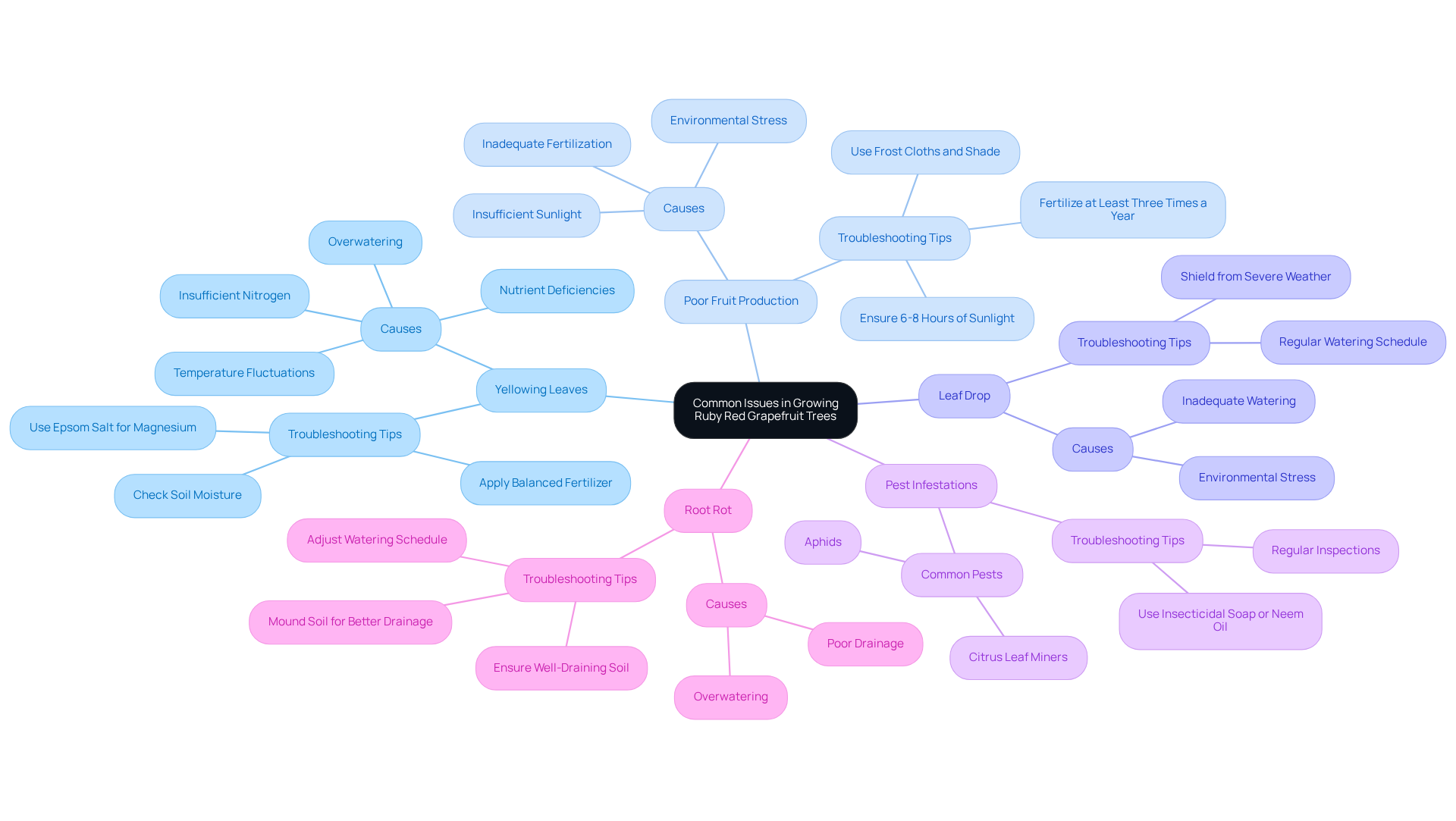
Conclusion
Successfully cultivating a Ruby Red Grapefruit tree necessitates a nuanced understanding of its specific needs and meticulous attention to detail. From selecting the optimal environment to implementing effective maintenance practices, each step is crucial for ensuring the tree thrives and produces abundant fruit.
Key considerations include:
- Providing ample sunlight
- Ensuring well-draining soil
- Maintaining appropriate watering and fertilization schedules
Additionally, recognizing and addressing common issues, such as yellowing leaves or poor fruit production, is vital for the long-term health of the tree. By adhering to the outlined steps for planting, maintaining, and troubleshooting, gardeners can foster a robust Ruby Red Grapefruit tree that may bear fruit for decades.
Ultimately, growing a Ruby Red Grapefruit tree transcends the mere act of fruit production; it embodies the creation of a sustainable and rewarding gardening experience. By committing to the care and understanding of this remarkable plant, gardeners can relish the sweet rewards of their labor while contributing to a vibrant garden ecosystem. Embrace the journey of nurturing your Ruby Red Grapefruit tree, and observe how it flourishes under your attentive care.
Cultivate Your Own Ruby Red Grapefruit Tree Today!
Start your gardening journey with Everglades Farm and enjoy the sweet rewards of homegrown fruit.
👉🏻 Buy Ruby Red Grapefruit Tree
👉🏻 Explore Grapfruit Collection
Frequently Asked Questions
What climate is best for growing Ruby Red Grapefruit trees?
Ruby Red Grapefruit trees thrive in warm, subtropical to tropical climates.
How much sunlight do Ruby Red Grapefruit plants need?
They require a minimum of 6 to 8 hours of direct sunlight each day for robust growth and abundant fruit production.
What type of soil is ideal for Ruby Red Grapefruit trees?
A well-draining sandy loam mix with a slightly acidic pH between 6.0 and 7.5 is ideal. Enriching the soil with organic material enhances drainage and nutrient availability.
What temperature range is optimal for Ruby Red Grapefruit plants?
They prefer temperatures between 70°F and 85°F and can endure brief cold spells but should be protected from frost.
How often should Ruby Red Grapefruit trees be watered?
They require 0.8 cups of water every 9 days when not in direct sunlight, with regular watering especially important during the first year to establish a robust root system.
What humidity levels are best for Ruby Red Grapefruit trees?
Moderate moisture levels are ideal. In drier climates, misting the leaves or using a humidity tray can help maintain moisture.
How should Ruby Red Grapefruit trees be fertilized?
During the growing season, apply fertilizers suitable for citrus plants to sustain their health and encourage fruit production.
When should Ruby Red Grapefruit trees be pruned?
Trim the plant in early spring by removing dead or damaged branches to foster growth and enhance air circulation.
What is the purpose of mulching for Ruby Red Grapefruit trees?
Applying a 2- to 3-inch layer of organic mulch around the root zone helps conserve water and deter weeds.
How long can Ruby Red Grapefruit trees live?
With proper care, these plants can live for over 50 years, making them a long-term investment for your garden.


